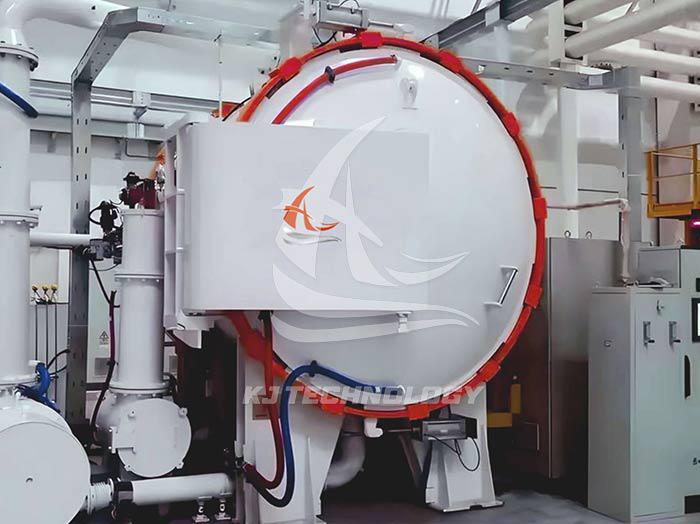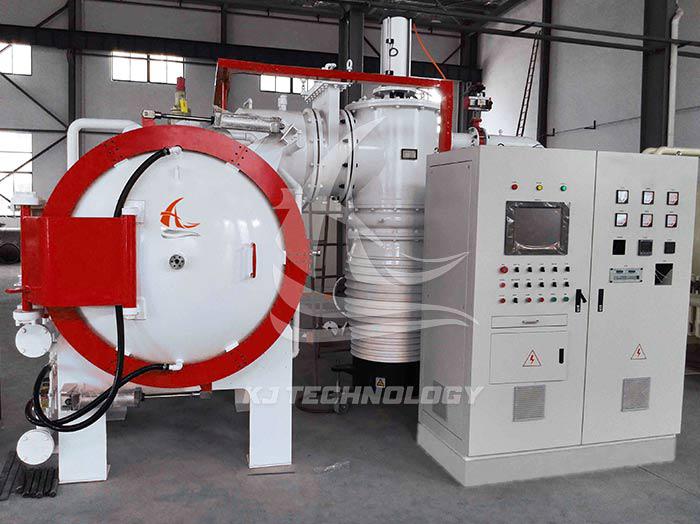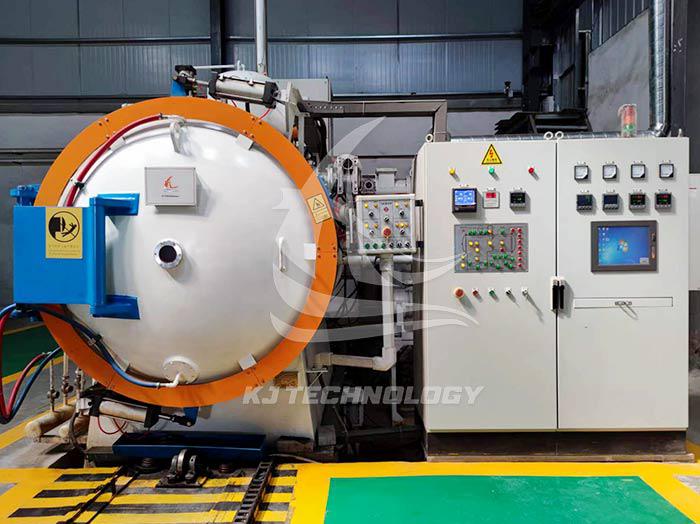What are the components of a vacuum annealing furnace?
 03-27-2025 Author: KJ technology
03-27-2025 Author: KJ technology
The vacuum annealing furnace mainly consists of the following components:
Furnace hood and driving mechanism:
Furnace cover shell: It is usually made of high-quality national standard steel frame and welded steel plate to ensure the sealing performance of the furnace.
Furnace hood drive mechanism: used to control the opening and closing of the furnace hood.
Furnace and furnace core:
Furnace: located inside the sealed furnace shell, it is the main space for heating and annealing.
Hearthstone: Composed of a shell (frame), insulation screen, material table, and heating element, it is the core component of a vacuum annealing furnace. The heat shield can be made of materials such as carbon fiber or stainless steel to provide good insulation performance.
Heating system:
High temperature and high radiation electric heating elements: such as resistance wires, graphite heating elements, etc., used to heat metal workpieces in the furnace.
Heating chamber (furnace chamber): It is a full metal radiation screen structure, including insulation layer, heating element, and material platform.
Vacuum system:
Vacuum pump: such as mechanical pump, Roots pump, diffusion pump, etc., used to extract air from the furnace and create a vacuum environment.
Vacuum measuring device: such as a vacuum gauge, used to measure the vacuum level inside the furnace.
Vacuum valve: such as vacuum butterfly valve, used to control the airflow of vacuum system.
Electric control system:
Temperature program control system: such as intelligent PID temperature controller, used for precise control of annealing temperature and time.
Programmable Logic Controller (PLC): Used to achieve automated control and monitoring of equipment.
Industrial LCD touch screen: used to display the operating status and parameter settings of equipment.
Sealing and locking mechanism:
Soft seal locking mechanism: used to ensure the sealing performance between the furnace cover and the furnace body.
Sealing structure of furnace door: such as hydraulic or pneumatic locking sealing structure, used to ensure the sealing between the furnace door and the furnace body.
Water cooling system:
Cooling water pipeline: used to cool components such as the vacuum furnace body, furnace door, and vacuum unit to prevent overheating.
Water cooled electrode: used to transmit current in a vacuum environment while maintaining cooling.
Pneumatic system:
Pneumatic triple components: including a water purifier, pressure gauge, oil mist generator, etc., used to provide clean compressed air.
Electromagnetic directional valve and pipeline: used to control the action of pneumatic actuators such as cylinders, inflation valves, vacuum valves, etc.
Off furnace transport vehicle:
Off furnace material cart: used for transferring workpieces inside and outside the furnace by lifting the furnace bottom and external guide rails.
Other auxiliary components:
Inflation system: used to inject neutral and inert gases such as hydrogen, nitrogen, etc. into the furnace during heating or cooling.
Temperature measuring hole cover: used to detect the temperature uniformity inside the furnace.
Transformer cabinet: used to provide power support for heating systems.








